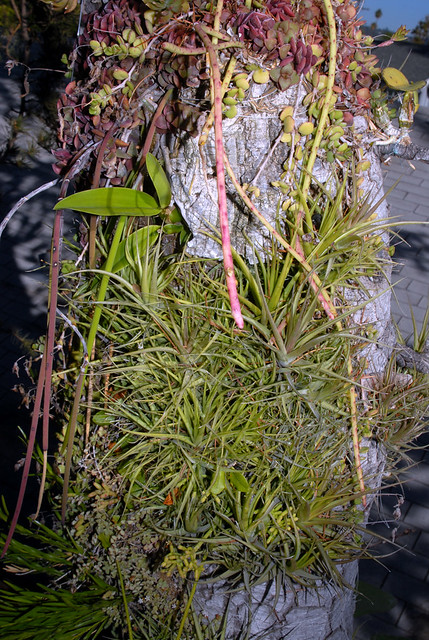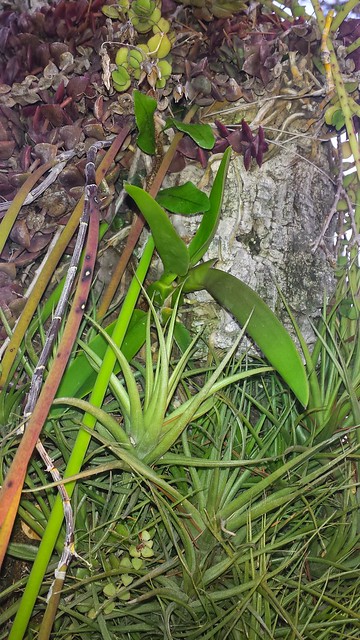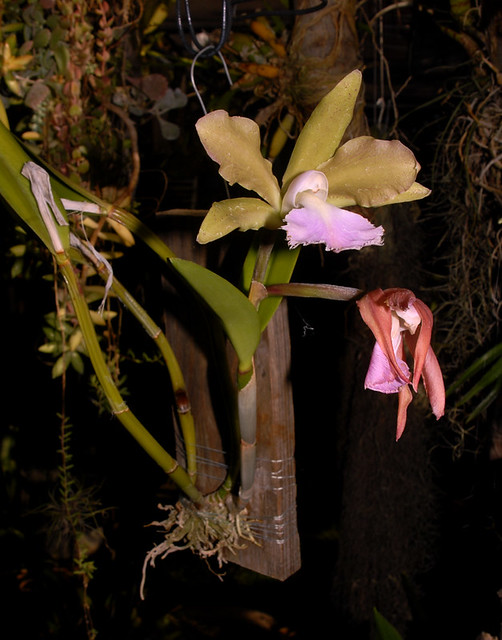My comment on Uncommonly early blooming Laelia anceps
*************************************************
The first L. anceps to cross the finish line? What did this guy do for the rest of the year? Cheer on the slow pokes?
The "volunteer" L. anceps on my tree started to put out a second growth back in August...

Here's a recent photo...

Given that temps have cooled considerably...and I've reduced water accordingly...not sure how completely the new growth will mature.
My L. anceps was too young to allocate any energy to flowering...but it sure seems theoretically possible to select for a L. anceps that blooms twice a year. The trick would be to cross-pollinate the earliest blooming individuals...which are the fastest and/or the coolest growing individuals. In some cases though they might simply be the luckiest individuals...ie in the warmest and/or most nutritious micro-climates.
But I think it's definitely a good idea if we all feature our orchids that finish the "race" (complete their growth cycle) in record time. Not just with L. anceps but with all epiphytic orchids. For example, this NOID ugly duckling...

...is one of my "fastest" Cattleya alliance orchids. I divided it this year which is why it finished later than usual. Noting which of our orchids are the "fastest" is basically highlighting the individuals that are better adapted to growing outdoors in Southern California. If we all exchange their pollen then we should be able to make much better progress in this area.
No comments:
Post a Comment